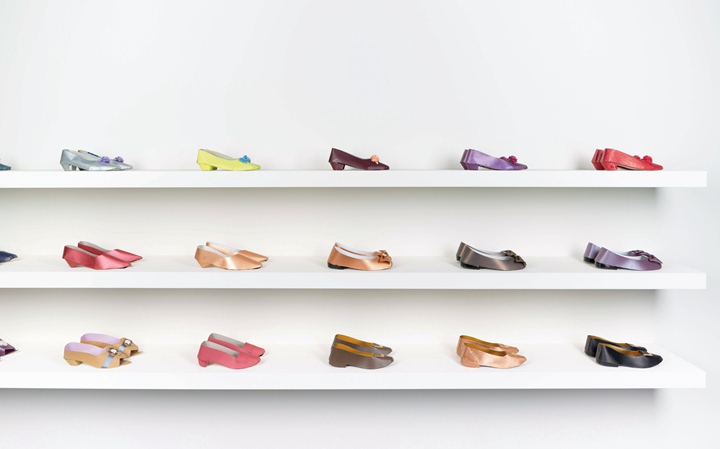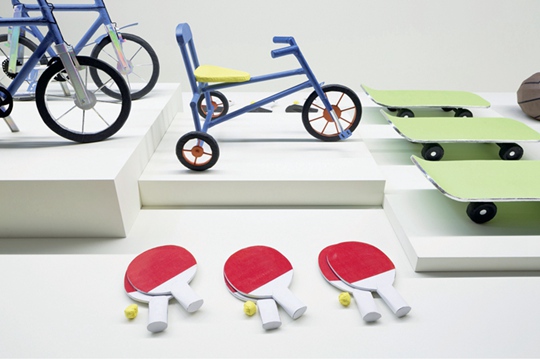FUNERARY GOODS
| July 3, 2015 | Post In 2015年6月号

PHOTO: Adrian Sauer
A recent project at the Staatliche Kunstsammlungen Dresden titled “Supermarket of the Dead” examines the growing prevalence of luxury items among the paper goods traditionally burned for ancestors. In Chinese custom, it is believed that in our departure we are left without worldly possessions and therefore our relations must provide us the necessary accoutrements—food, accommodation, transportation—to ensure a comfortable afterlife. But apparently the dead are bound to similar norms and codes to those that govern the living. The latest edition of the iPhone or Louis Vuitton purse remain key to access and mobility; necessary requirements for securing a place among the afterworld’s elite. In the museum exhibition in Germany, a collection of paper Gucci bags, Prada shoes, and other global brand fetishes are on display, creating a perverse typology.

Courtesy Staatliche Kunstsammlungen Dresden
PHOTO: Adrian Sauer
Though lacking in material substance, these ephemeral objects mirror global trends and reflect how they are translated into traditional society. Hong Kong artist Kurt Tong photographs various paper offerings against black backdrops in his series “In Case it Rains in Heaven,” featuring paper Coca Cola cans and designer shoes alongside more practical items such as a gas stove for cooking and an electric fan. Tradition, it seems, is adept at incorporating this new reality.

Courtesy Staatliche Kunstsammlungen Dresden
PHOTO: Adrian Sauer
The act of burning, however, can be a violent gesture. Burning obliterates, yet it also sublimates. MAP Office’s 2009 Mise(s) a Feu (Ferrari) highlights this dual nature pointing to differences in cultural perception. The burning of a red paper Ferrari, for example, could be a reference to riots that have occurred in the west over the last few decades or, in China, be seen as a gesture of reverence.

